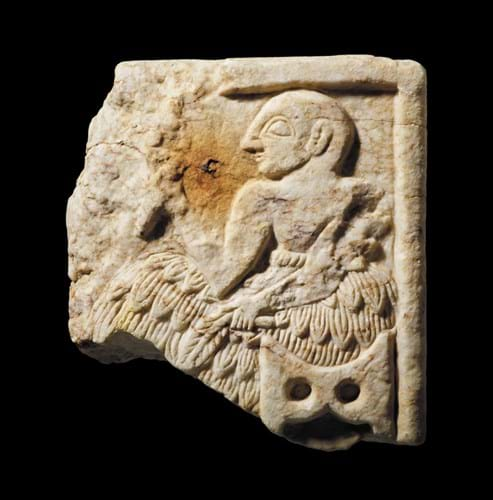
The British Museum and the Art and Antiques Unit of the Metropolitan Police Service worked together to identify the limestone wall plaque after it was planned to have been offered for auction at Timeline Auctions in May 2019.
The Metropolitan Police Service (Art and Antiques Unit) were alerted about the sale and experts from the British Museum were able to identify it as originating from an ancient Sumerian temple from around 2400 BC.
Following further enquiries, the plaque was disclaimed by its consigner. The museum said the item had been illegally removed from Iraq.
Temple plaques such as this are rare and there are only around 50 examples known in existence.
Traces of burning are a feature found on some previously excavated at the site of Tello/Girsu, where the British Museum’s DCMS funded Iraq Scheme has been carrying out archaeological training and excavations, and it is possible that it comes from there.
This site was extensively excavated and looted in the late 19th and early 20th centuries, and looted again in the 1990s during the Gulf War, and most recently in 2003 during the Iraq War.
Following a brief public display in London it will be repatriated to Iraq.
Cultural heritage
The museum described this piece as an “exciting and important new discovery”.
Hartwig Fischer, director of the British Museum said: “The British Museum is absolutely committed to the fight against illicit trade and damage to cultural heritage. I am delighted that we are able to assist in the return of this important object to Iraq, via the Embassy of the Republic of Iraq in London.
“This case is another good example of the benefits of all parties working together – in this case museums, government departments, and the Met Police – to combat looting and protect cultural heritage”.
DI Jim Wingrave, central specialist crime at the Metropolitan Police Service said: “We know that its country of origin has been extensively looted over many years, especially during times of conflict. In order for buyers to be sure that they are not acquiring illicit material and fuelling the trade in stolen antiquities they should conduct a thorough due diligence process before every purchase.”





